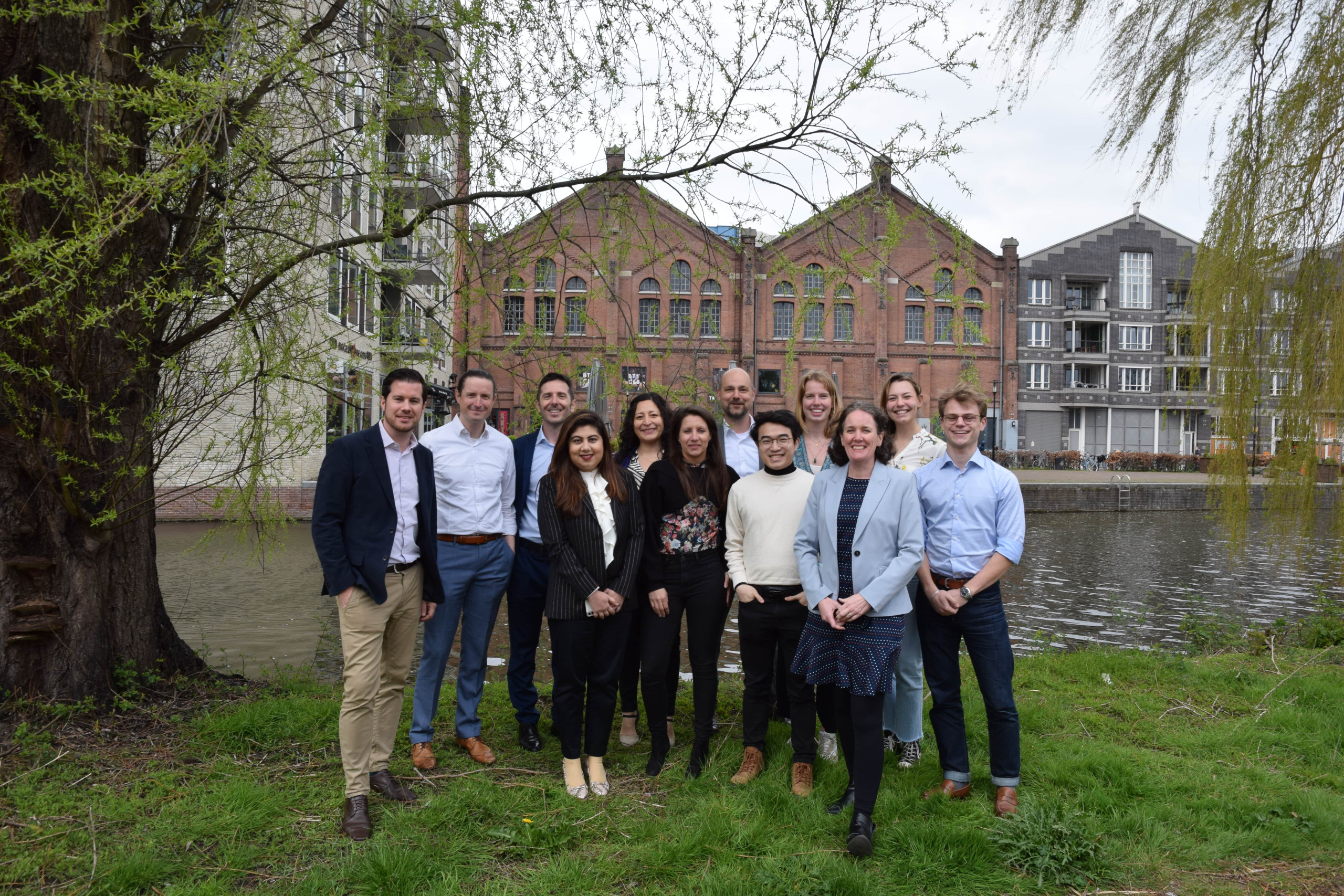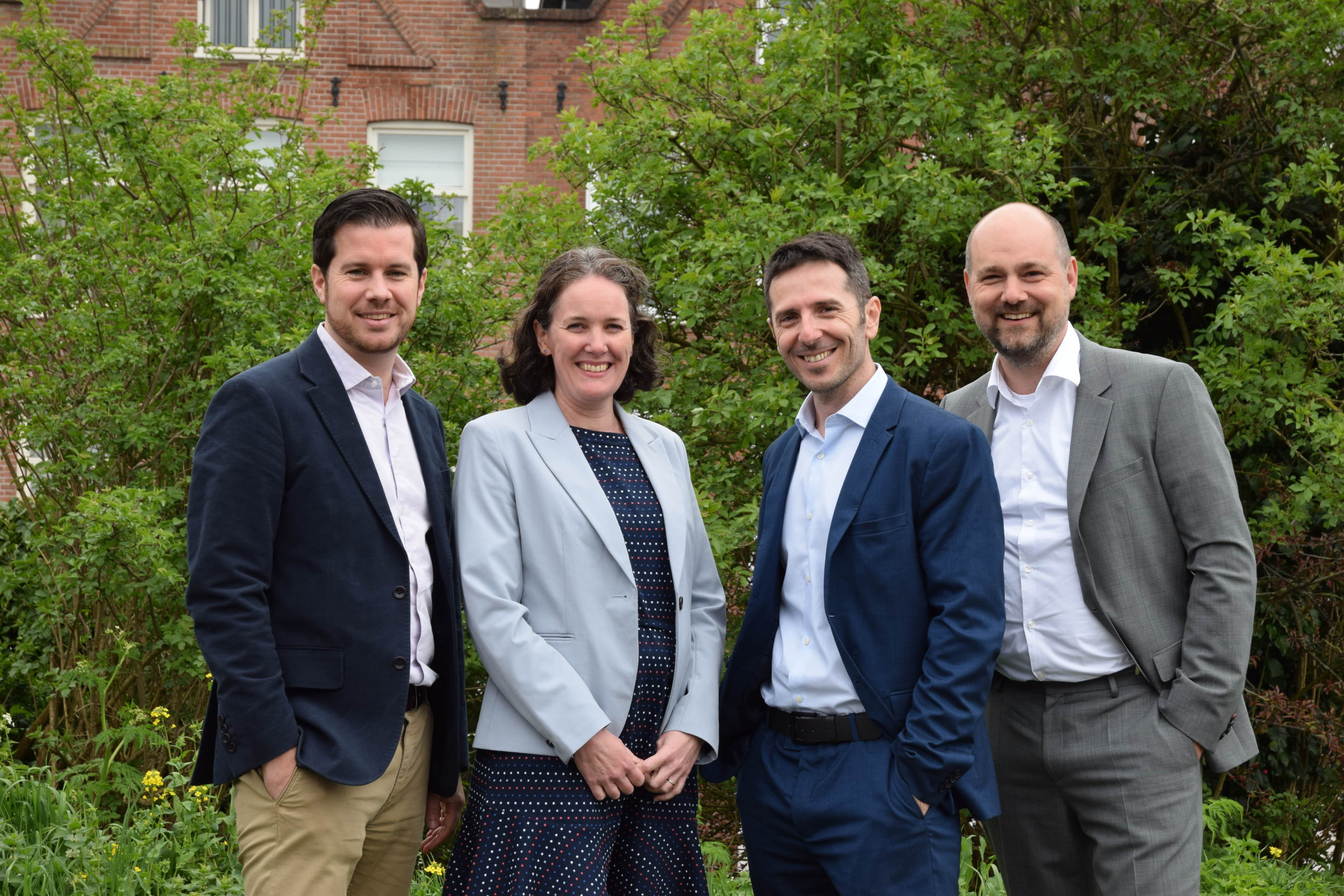Being an impact-driven person, it is no surprise that Han Valk is working towards maximizing impact for his company’s clients and driving change effectively. As the CEO of HVFC International, Han Valk is the person with scalable and practical solutions for organizations he believes in. In the new edition of DevelopmentAid’s ‘Hero Stories’, he reveals the current fundraising trends, the subtleties of the sector, tips and tricks for sourcing funds and maintaining long-lasting relationships with donors. Meet Han Valk.
DevelopmentAid: How do you help your clients to create their own funding opportunities and bring the change?
Han Valk: All our clients are impact driven organizations and we, as a consultancy company, are helping them to maximize it. We have one pillar focusing on fundraising, a second pillar focusing on impact, and a third pillar focusing on talent. Fundraising helps to gain control of the fundraising future, identifying funding, by engaging with donors in a proactive way, building long lasting relations with foundations and institutional donors. Impact works by helping our organizations to spend their money in a better way. We help them to define what the desired impact is and if their budget is being used in the best way possible. We have a third pillar that focuses on talent. We want to make sure that our clients work with the best people possible. We assess how teams are functioning, if the procedures and policies are clear, if everyone has the right job in line with their own ambitions, skills, motivations, and their experience. If not, we help them with training and coaching. We offer recruiting services as well. We help them to find good fundraisers, finance people or other specialists.
DevelopmentAid: Along with your team, you are working towards becoming an organization of reference. How are you going to achieve this and adapt your company to the market’s constantly evolving needs?
Han Valk: I think we have to do three things: one – our offer needs to diversify. So, we started with fundraising, that continued with impact, now we have our third pillar – the talent. Maybe one day we will do communication, or finance, or legal, everything an organization might need. We also diversify the way we provide our services so that they are accessible to all organizations; even those with just a few hundreds of euros budget per year. They learn pretty much everything that we tell the largest organizations we work with and get the same level of knowledge. That’s a concept we are thinking about, how we tailor our offer so that it is accessible to all organizations worldwide. The third thing to do is let people know that we exist. That’s why we are expanding, we have local representatives and offices in US, Denmark, Sweden, UK, Singapore, Bangladesh, and that’s something we want to grow.

DevelopmentAid: Organizations need to break through the noise and look for a clean shot to establish relations with potential donors. What are the main challenges that organizations face?
Han Valk: One of the biggest challenges organizations face is the need to adjust to a new financing reality, the fear of losing funding or having already lost funding, high ambitions, much bigger than the funding available to them. Some of them come too late. “We just lost 30% of our income. Can you help to find new funding opportunities for us?” That’s a huge challenge. It’s neither attractive nor inspiring to fill funding gaps for donors. They are looking to fund dreams, ideas, rather than internal issues.
“Maybe you are writing proposals that never should be written because you are never going to win.”
A question often asked is if we do a proposal writing workshop. Why do you need one? “Well, we see that our fundings are decreasing, our proposals are being rejected, so we need to write better proposals.” How do you know that? Maybe you are writing proposals that never should be written because you are never going to win and that’s a completely different issue. So, they do what they have been doing for the last ten years and that has always worked, but it doesn’t work anymore. I tell my kid who goes to high school: “A part of the test evaluation has nothing to do with what you are writing down. If the teacher likes you, every time you make a mistake, he will give you the benefit of the doubt. If the teacher does not like you, this also happens, every small mistake will become a big problem”. This is what happens with proposal writing. Your relationship with funders needs to be very strong. And all of that is not in the fundraising strategy. Together we develop an action plan to change and achieve a certain amount of income in the next 3-5 years.
Clients want to diversify their funding, accessing resources, not only European funding, but also from the US, not only governmental, and also foundations. We help them to identify what they need to become successful and write better proposals. Make sure they are seen by the donors. Good articles written about them in newspapers or magazines can be as important or maybe more important than the proposal they write. We know a lot of people, we have a good network, and we work for many organizations. We are active in 35 countries.
DevelopmentAid: How and where can new donors be found? How can potential donors be approached when they are inundated with funding requests?
Han Valk: It all comes down to strong relationships. If the relationships are strong, you can have an influence on your donors to a certain degree. You need to find five or ten foundations that are most relevant to you and set indicators. There are too many opportunities, but focusing on useful partners for you allows you to be successful. When you have that shortlist, we need to make sure the decision makers know about you. We don’t have to become a new Coca-Cola or McDonalds. The only thing is to make these 20 people maybe, 2-3 people per organisation, get to know about you and that’s a lot easier. We can make sure that you speak at the events where they are, publish an article in a magazine they read, make sure that someone introduces you to them. These seem to be small things, but do that a few times and they will be interested in talking to you. Once they have heard about you, there’s a much higher rate of response.
“There are too many opportunities.”
So you make this first contact and when you have, the most difficult but crucial thing is to try only to ask questions. They always need to start first. Why is that? Based on their answers, you can adjust your story to bring and highlight proper examples. It would be better to ask them why they are interested in a certain project or location and you can make a connection right there. Personal connection is the key. I always say that even if there are foundations and institutions, actually it is people who give to people. So, it’s a contract between two organisations but, in the end, it’s about people’s work.

DevelopmentAid: How can long-lasting trustful funding relationships be established?
Han Valk: Whether you can maintain your relations or not depends on your first contact. We always advise our clients to see the donors not as much as donors, but more as partners. That is difficult because the whole reason you are talking to them is because you need money. If there is mutual interest, you will bring your ambitions together. You will ensure the execution of the work, they will pay the cost. And if you are genuinely interested in each other and you trust each other, there is no incentive to change that. So, there is general interest, trust, implementation, you keep them updated, the good news, the bad news, the challenges, and the problems that should be addressed. If you do that, there is no reason for anything about the two of you to change that.
“I make a comparison with dating.”
I am going to ask you to invest one million in my project. So, if you make a comparison with dating, it’s a very aggressive way to find a partner. It’s very likely the person will slap you in the face. Let’s marry, that’s even more scary. You don’t know each other. If you don’t know each other, there is no trust, the expectations are probably different. If you are too eager, that’s a recipe for disaster, but if you are open-minded and interested in each other, not just viewing the donor as a wallet full of money, you will have an impact that will work.
DevelopmentAid: What areas receive more funding?
Han Valk: If you change the mindset to being open and proactive and to building relations, there is enough funding for all. It might be in different places than we would expect, in different countries, or different donors you can work with. Organizations that are stuck in a certain way of thinking face problems. Donors’ priorities are changing constantly, but the world is changing a lot as well. The war in Ukraine, the repercussions of the COVID disaster, climate change – all of these things affect donors’ priorities, and we cannot control them. Organizations from my country or your country can access funding all over the globe and there are opportunities everywhere. If you have a little bit of an international mindset as an organization, you can find opportunities from Australia to Brazil, from South Africa to the US and of course Europe, Middle East, everywhere there are opportunities.
“There’s enough funding for all.”
DevelopmentAid: What funding trends do we foresee with donors in the coming years?
Han Valk: Funding is very difficult to predict because it greatly depends on what is happening in the world. Impact becomes more and more important, and you need to showcase that you are impact driven and you are really working along with funders and NGOs, the private sector, government, joining coalitions. Donors do compare you with others and they want to see where they are going to get the most value. Another trend to be considered is the localization of funding which is already happening.
We currently work for such NGOs who go from the US to the Netherlands and from the Netherlands to the US. There is limited added value in doing that. So, capacity in developing countries will be built and donors are going to fund local organizations directly. More funding will go directly to them.
DevelopmentAid: Are you using similar strategies for your own company?
Han Valk: We measure our performance, we assess how our clients are doing, we constantly seek gaps and new approaches to fill them. We invest as well. We bring the team together every 3 months and rethink our approach. For instance, recently we brought all our team members from the US, from other countries and offices to the Netherlands, where we sit for a whole week working on these strategic issues analysing if we are doing the right thing.
DevelopmentAid: What do you need to survive and thrive? To make a real impact?
Han Valk: Define your impact statements, set indicators, do desk research, study, and undertake the appropriate interventions. From there, you can assess where the funding gaps and opportunities are. We can help our clients by finding more funding, but it really starts with impact.

